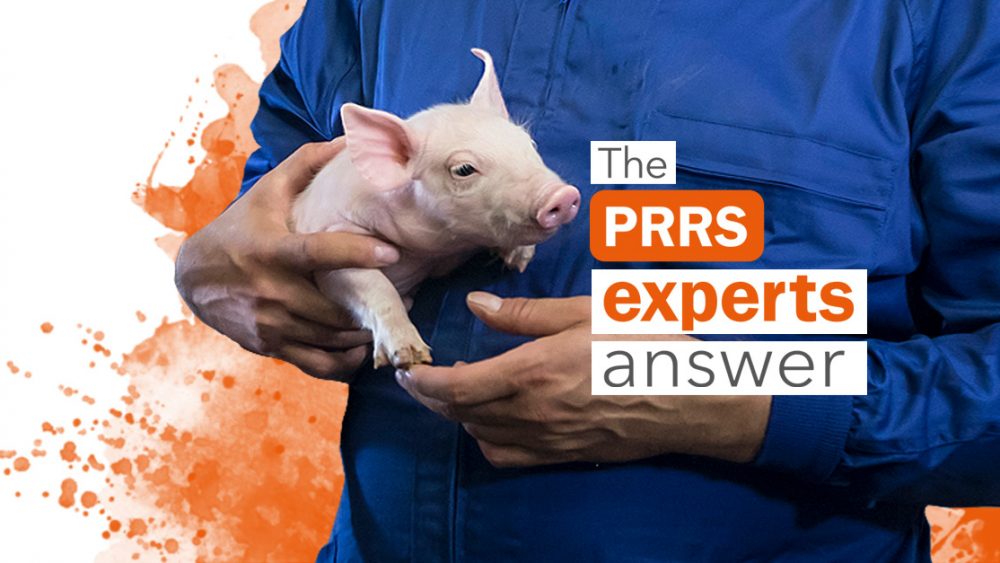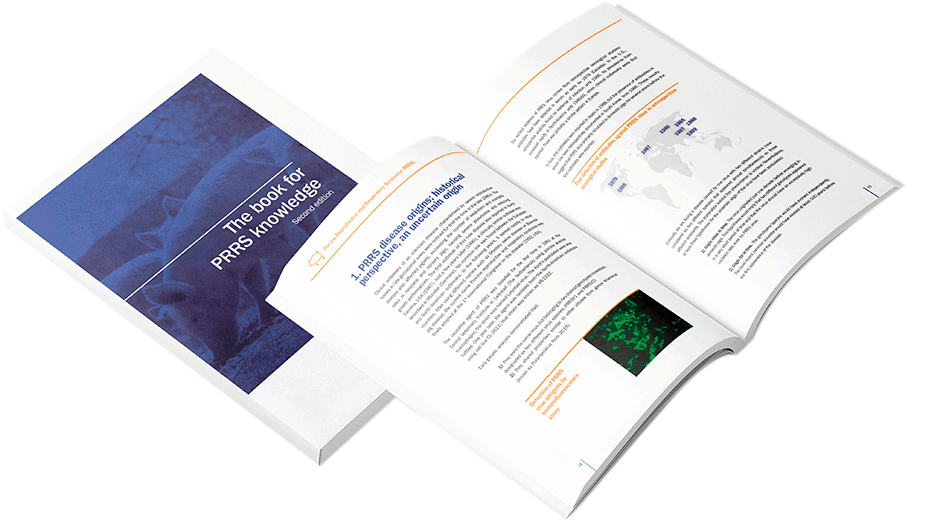The Porcine Reproductive and Respiratory Syndrome has been the disease that has changed many ideas in global pig production in the same way as HIV did in the human population. Listening to the testimonies of opinion leaders in this video, it is fair to say that we have learned a lot and that the video captures two visions: that of the scientists and that of the practitioners.
Conceptually, there are certain similarities between the PRRS and AIDS, the latter appearing in the 1980s, whilst PRRS appeared in the 1990s. In both cases, they are very serious diseases in the affected populations and despite the fact that there is still no cure, there has been much progress in our knowledge of the viruses that are responsible for them, and how to improve control strategies for them. Improved biosecurity in pig production is equivalent to the educational measures used to reduce the risk of sexual transmission.
Fortunately, today the mortality associated with HIV, despite having been very high, has been dramatically reduced and is associated with concomitant diseases, sounds familiar?
There are also major differences between the two syndromes – the acquired immunodeficiency syndrome remains a potential cause of death throughout the world, with an estimated 37 million affected individuals* and, making a rapid calculation on the basis of a population of some 7,000 million, this means about 0.5% of the world population, and this is where it differs radically from the PRRS virus, as only 5% of the world pig population is considered to be free of the Porcine Reproductive and Respiratory Syndrome.
If we look back to the first cases of both diseases, a great deal of time and money has been invested in deepening our understanding of both syndromes and in both cases there has been a great deal of progress so that today it is possible to live with both viruses and lead a dignified life as an AIDS sufferer or achieve an acceptable level of production if you are a PRRS-positive producer.
Indeed, it is one of the lessons that our opinion leaders (the practitioners) have learned, we have learned to live with the disease, although there is still a great deal to learn because, as Alberto Stephano says, just when you think you know everything there is to know about the PRRS virus, you get PRRS again. The approach by our colleague Carlo Lasagna using an (Italian style) football metaphor is also worthy of note, firstly defence (biosecurity) and then good attacking (optimization of control measures).
As for the scientists, we have learned how to diagnose it, monitor it, sequence it and even how it interacts with the immune system or how it evades it, we have learned how it can mutate or vary genetically, and a key area in which there has been a great deal of research (especially by American universities) has been the main routes of transmission of the disease (as with HIV, the greatest efforts have been devoted to minimizing transmission).
Key aspects on which work is being carried out in the sector are biosecurity, both external and internal, and immunization etc., which should be understood as a series of measures, because if they are taken separately, the probability of failure increases exponentially.
Following a more modern approach, Darwin Reicks points to air filtration for the control of aerosols and also, more recently, the probability of working with animals that are genetically resistant to the Porcine Reproductive and Respiratory Syndrome virus.
HIPRA © All rights reserved




